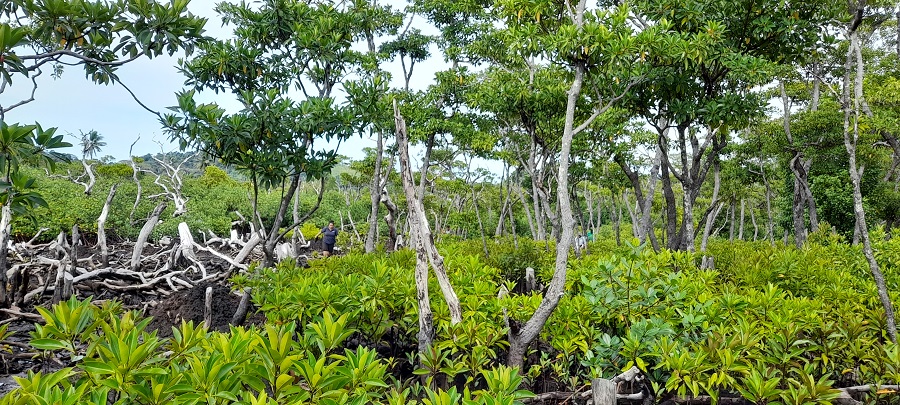Mangroves provide critical ecosystem goods and services to Fijian communities by providing shoreline stability, habitat, and breeding grounds for important subsistence and small-scale commercial fisheries and protection from storms.
It is also a vital natural climate solution greatly contributing to the storage and sequestration of carbon, part of the basis upon which Conservation International Fiji’s Blue Carbon FiProject seeks to promote and protect.
With funding from Australia’s Department of Foreign Affairs & Trade (DFAT), CI, via the project seeks to protect and restore mangroves by strengthening its management and restoration actions in priority sites, supporting policy and financing pathways to protect it in the long-term, and strengthening the delivery of nature-based solutions to climate change adaptation.
The Blue Carbon Fiji Project was launched to improve the resilience and adaptive capacity of Fijian communities through the delivery of integrated nature-based solutions and to unlock innovative financing pathways that strengthen mangrove management and restoration while addressing the impacts of climate change.
Already, Conservation International, together with key partners, has implemented several activities in the project areas in Rewa, Tailevu, Ba, and Ra Provinces. As part of the project’s Drivers of Mangrove Degradation and Deforestation (DoDD) study, initial baseline studies including household surveys, focus group discussions and key informant interviews, as well as drone surveys, have been completed for selected villages in the mangrove deltas within the project sites.
In collaboration with the World Wildlife Fund (WWF) and the Ministry of Forestry, Conservation International led the survey which began on August 17 and ended on September 16. A total of 28 villages and over 600 households were surveyed on how they utilize their mangroves and mangrove resources.
The social survey focused on gathering information to better understand how mangroves are used in Fiji, and understand the social, cultural, and economic factors that affect mangrove restoration and conservation efforts in Fiji. This work also focused on gaining a better understanding of climate vulnerability and livelihood needs of communities located in the Rewa and Ba Delta and Navitilevu Bay in Ra.
These surveys were followed by a district-level consultation with representatives from the selected mangrove communities.
A ground truthing survey was also conducted in October and November to determine priority areas to restore in the Navitilevu Bay in Ra and Tavuca Island mangroves in Ba. Initial analysis of drone and satellite imagery has shown that large areas of Ba mangroves are naturally regenerating after consecutive tropical cyclones compared to the Navitilevu Bay mangroves areas.
The ground-truthing survey was critical to determine the extent and cause of the degradation and identify priorities and types of restoration options for the sites.
Conservation International, in collaboration with the Ministry of Forestry, is now in the process of drafting restoration plans for the priority sites before restoration work commences early next year.
This work is supported by the Government of Australia, the Fijian Government, and Conservation International, which are partners of the International Partnership for Blue Carbon (IPBC). The IPBC is a global network of 54 governments, non-governmental organisations, intergovernmental organisations, and research institutions from around the world who understand the importance of coastal ecosystems and are committed to their conservation.
Gratitude to DFAT for continuing to support our coastal mangrove communities in the face of the inevitable climate impacts.
Conservation International Fiji would like to also acknowledge the respective provincial offices of Ba, Ra, Tailevu and Rewa for their support and collaboration with the Blue Carbon Fiji Project.









